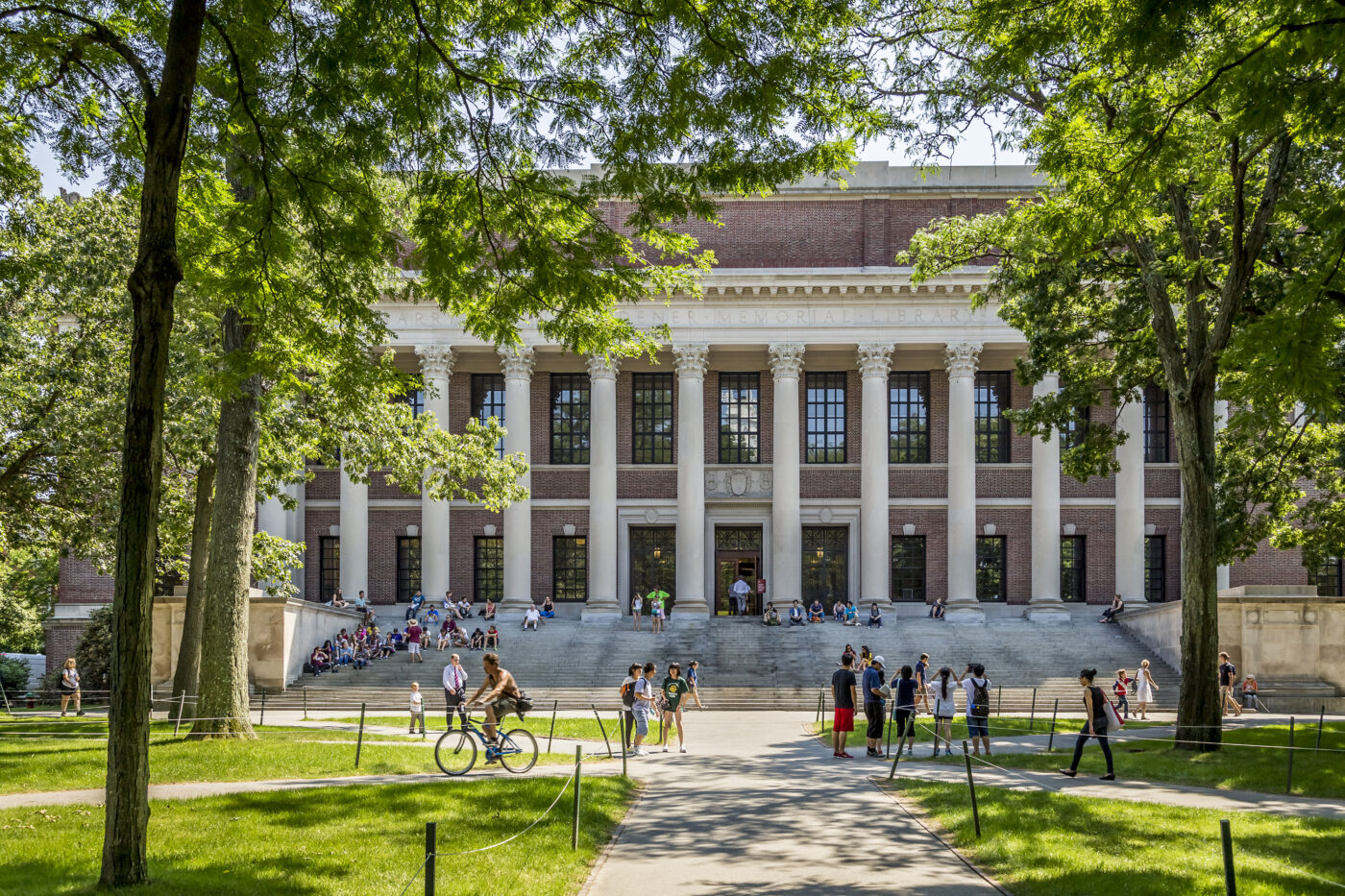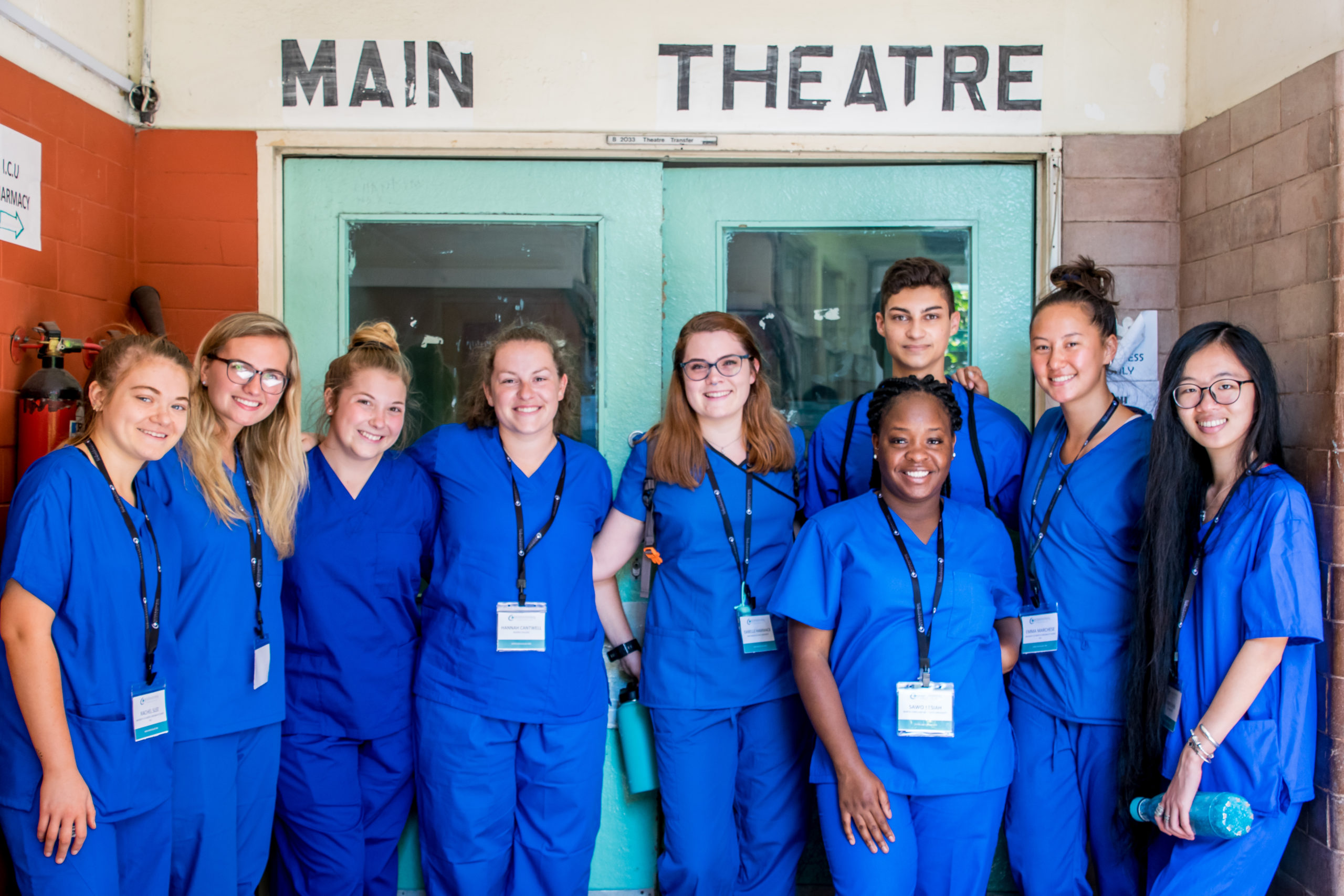In the educational landscape, 2023 marked a significant turning point. The Supreme Court ruled that race can no longer be the “paramount factor” in college admissions, a decision that significantly affected affirmative action policies. While this ruling pertains to all higher education, its implications are particularly notable in medical school admissions. Historically, affirmative action has played a crucial role in promoting diversity and inclusivity in medical education. Its change in status begs the question – what’s next for medical schools?
Affirmative Action in Medical School Admissions
To fully grasp the implications of this Supreme Court ruling, it’s important to understand the role affirmative action has played in medical school admissions. One must delve into the historical and transformative role of affirmative action within the hallowed halls of medical education.
Affirmative action, this well-intentioned strategy, has acted as a catalyst in broadening the horizons for those groups that have been, through the annals of history, pushed to the margins. Its imprint on the composition of medical schools, enriching the student body with individuals of Black, Hispanic, and Native American descent, has woven a tapestry of diversity within the very framework of our future healthcare force.
The Context: Systemic Inequities and the Need for Diversity
The plea for diversity in medicine, contrary to a superficial glance, transcends the realm of political correctness and lands squarely within the realm of practical exigency. The empirical evidence elucidates an inextricable link between the heterogeneity of healthcare practitioners and enhanced patient outcomes, a link particularly pronounced among ethnic and racial minorities. Patients inherently trust and engage more effectively with healthcare professionals who reflect and comprehend their cultural heritage and unique narratives. This, in essence, sets the stage for a superior delivery of healthcare.
The Supreme Court's Ruling
The Supreme Court’s landmark 2023 decision was indeed a seismic shift in the field of higher education admissions, particularly for medical schools. The ruling hinged on the principle that race can no longer be regarded as a “factor of paramount importance” in college admissions. This key aspect of the ruling sends a clear message that race cannot be the primary deciding factor when admitting students.
The Supreme Court’s ruling came after several challenges to affirmative action policies at different universities. The arguments against such policies were varied, with some critics contending that they amounted to reverse discrimination. They argued that these policies, originally designed to level the playing field for marginalized communities, were unjustly penalizing applicants not belonging to these groups.
The debate has raged on, where critics contend that these very policies, originally designed to even the odds for communities that have historically been at the periphery, were paradoxically penalizing aspirants not emanating from these cohorts.
Yet, those who advocate for affirmative action underscored the critical need for such methodologies to rectify long-standing imbalances and imbue the halls of higher education with diversity. They made a persuasive case that a diverse student body augments the educational experience for every scholar, mirrors the heterogeneity of the world we inhabit, and eventually paves the way for a representative and empathetic workforce.
Despite these impassioned arguments, the Supreme Court maintained that while the objective of diversity is indispensable for academic institutions, the road towards it should not be paved by making ethnicity the cardinal factor in admissions judgements. Such policies, the court opined, conflict with the principles of equal rights, hinting that admissions processes with a focus on race might inadvertently create illegal biases against applicants of differing racial or ethnic origins.
For the esteemed institutions of medical education, the ramifications of this ruling are monumental. Many such institutions leaned heavily on the policies of affirmative action, viewing them as a vehicle to cultivate diversity within their student ranks, thereby ensuring a future medical workforce reflecting the rich tapestry of our society. Such diversity is deemed pivotal in the medical sphere, where physicians frequently encounter patients from a wide array of racial, ethnic, and socioeconomic backgrounds.
However, with ethnicity no longer authorized to be the “paramount factor,” medical schools are compelled to reassess their admissions strategy. They now find themselves chartering an unexplored course towards their cherished goal of diversity, tasked with formulating new admissions policies that nurture diversity but eschew an overreliance on race as a deciding element.
Despite the challenge this ruling presents, it also opens the door for innovative strategies to promote diversity. For example, institutions may consider other aspects such as socioeconomic status, unique life experiences, first-generation college student status, and other facets of an applicant’s background that contribute to diversity.
The Supreme Court’s 2023 decision has set in motion a transformative period for medical school admissions. Medical schools are now tasked with devising ways to foster diversity within their student bodies, all while adhering to the new legal landscape created by this ruling.
Adoption of Race-Neutral Admissions Policies
Following the Supreme Court’s ruling, many medical schools have been pressed to shift their admissions policies. They’ve pivoted towards race-neutral admissions, where the focus is now placed primarily on academic qualifications such as grades, MCAT scores, and extracurricular activities. This shift has the potential to significantly reshape the landscape of medical school admissions and the future makeup of the healthcare workforce.
Academic qualifications have always been a crucial factor in medical school admissions. With the removal of race as a dominant consideration, the importance of these qualifications becomes more prominent. This can potentially create a highly competitive landscape for all applicants. A higher emphasis on grades and MCAT scores could mean that applicants now need to meet an even higher threshold to secure a place in medical school.
Extracurricular activities, too, will likely be subject to increased scrutiny. In an environment where all applicants must demonstrate exceptional academic prowess, these activities can become a critical differentiating factor. Medical schools will likely look for candidates who show a strong commitment to healthcare outside of the classroom. Volunteering, leadership roles in healthcare-related organizations, research experience, or unique personal experiences in healthcare can all play a significant role in an applicant’s competitiveness.
The shift towards race-neutral policies may also compel medical schools to consider other aspects of an applicant’s profile that contribute to a diverse student body. For instance, aspects such as socioeconomic status, being the first in their family to attend college, overcoming adversity, or contributing to their communities could be considered.
However, the move to race-neutral admissions also raises concerns about the potential decrease in diversity within the medical field. As previously mentioned, a diverse workforce is critical in providing culturally competent healthcare to a diverse patient population. Medical schools will need to balance the emphasis on academic qualifications with the necessity for diversity within their classes.
As medical schools implement these new policies, they’re venturing into uncharted territory. The full impact of these changes will only be evident over time. Still, what remains clear is that the landscape of medical school admissions is changing, and the resulting composition of the future healthcare workforce is bound to reflect these changes.
As we navigate this new era of medical school admissions, it will be crucial to monitor these changes and engage in open dialogue about the impacts on diversity and representation in healthcare.
Changes in the Applicant Pool
Affirmative action policies have historically been a beacon for diverse applicants. They have given underrepresented minorities a sense of fairness and inclusivity in the admissions process, fostering a diverse and vibrant applicant pool. With the changes brought on by the Supreme Court’s ruling, however, it is expected that the demographic makeup of the applicant pool could shift noticeably.
Firstly, it’s crucial to understand that the psychological impact of the ruling might deter some prospective students from underrepresented backgrounds. Historically marginalized groups could perceive this ruling as a sign that the system is less welcoming or less attainable, thereby reducing their likelihood of applying.
Further to this, with ethnicity now removed from the spotlight in admissions verdicts, the students from underrepresented demographics might perceive their chances of securing a seat as diminished, precipitating a potential downturn in applications. This could usher in a vicious cycle, where dwindling applications from these segments result in lesser diversity, thereby further deterring these cohorts from applying in the following years.
However, it is crucial to underscore that the ripple effects of these adjustments could diverge widely based on the nuances of the admissions policies of individual medical schools. For instance, institutions that have been heavily reliant on race as a selection criterion might witness a more notable shift in their applicant landscape than those that have consistently adopted a more comprehensive review process.
The alterations may not be as stark or immediate as certain quarters might anticipate. Numerous medical schools, with their firm commitment to diversity, will likely explore alternate avenues to lure a multifaceted pool of applicants. For example, they could bolster their outreach endeavors towards high schools and colleges that host significant contingents of underrepresented groups, offering resources and mentorship to inspire these students to contemplate a future in medicine.
Additionally, some institutions may pivot their focus to alternate facets of diversity such as socioeconomic status, personal tribulations surmounted, or distinctive life experiences. This could potentially amplify the definition of diversity within the applicant spectrum.
While the count of Black, Hispanic, and Native American students applying to medical school may see a temporary dip, it is probable that medical schools will display resilience, innovation, and adaptability in response to the Supreme Court’s ruling. The demographics of the applicant pool may transform, but it may also become more diverse in manners we do not conventionally quantify or instantly discern.
Evidently, we are embarking upon a phase fraught with uncertainty and flux. As we continue our scrutiny of these shifts, it’s indispensable to maintain an open dialogue on diversity in medical school admissions, assuring that all perspectives are acknowledged and the premium placed on diversity within the medical realm remains undiminished.
Implications for Diversity in the Medical Field
Affirmative action policies have long been regarded as essential tools to cultivate a diverse healthcare workforce. These policies have been integral in ensuring representation from all walks of life in the medical field. Research consistently shows that such diversity improves the healthcare experience for patients and contributes positively to health outcomes. For instance, patients often report better communication and higher levels of satisfaction when their healthcare provider shares their cultural background or understands their unique needs.
However, with the Supreme Court’s ruling and the ensuing shift to race-neutral admissions policies, there are concerns that the medical field may witness a decline in diversity.
This decline could have several far-reaching implications. Firstly, it could affect healthcare delivery, particularly for marginalized communities. Physicians from underrepresented backgrounds often serve these communities, understanding their unique cultural, linguistic, and social-economic nuances. A less diverse workforce could potentially mean fewer healthcare providers working in underserved areas, thereby exacerbating existing health disparities.
Secondly, diversity in the medical field is not only beneficial to patients but also to the healthcare professionals themselves. It fosters an environment of mutual learning and understanding, promoting cultural competency among all members of the healthcare team. A potential decrease in diversity could limit these valuable interactions, consequently impeding the development of a culturally competent healthcare workforce.
Thirdly, diversity in the medical field acts as a beacon for aspiring medical professionals from minority backgrounds. Seeing successful doctors from similar backgrounds can inspire and motivate these individuals to pursue a career in medicine. A less diverse medical field might deter potential applicants, further perpetuating a cycle of underrepresentation.
However, despite the potential hurdles instigated by the Supreme Court’s decision, it’s vital not to lose sight of the persistent commitment to diversity within the medical sphere. Medical schools, hospitals, and health systems are actively in pursuit of creative strategies to uphold and amplify diversity in the absence of race-centric affirmative action. These could encompass initiatives such as targeted outreach programs, mentorship schemes, and accentuating other elements of diversity like socio-economic status or personal life experiences.
The quest for a diversified and representative medical workforce is, without a doubt, intricate but remains a worthy endeavor for the enhancement of healthcare delivery and patient outcomes.
Acceptance Rates and Affirmative Action
Before we submerge ourselves deeper into the potential ramifications of the Supreme Court’s verdict, it’s crucial to comprehend the influence of affirmative action policies on acceptance rates across diverse applicant groups.
For the academic cycle of 2022-2023, the acceptance rate for Black applicants to medical school stood at 38.3%, in contrast to 48.8% for white applicants. The acceptance rate for Hispanic applicants registered at 36.4%, as compared to 48.8% for white applicants. For Native American applicants, the acceptance rate was notably lower, clocking in at 28.6% against the 48.8% for white applicants.
| Applicants | Acceptees | Acceptance Percentage | |
|---|---|---|---|
| American Indian or Alaska Native | 94 | 49 | 52% |
| Multiple Race/Ethnicity | 6,086 | 2,841 | 47% |
| Hispanic, Latino, or of Spanish Origin | 3,257 | 1,517 | 47% |
| Asian | 12,736 | 5,802 | 46% |
| Native Hawaiian or Other Pacific Islander | 52 | 23 | 44% |
| White | 22,917 | 10,077 | 44% |
| Black or African American | 4,924 | 1,924 | 39% |
| Unknown Race/Ethnicity | 1,777 | 679 | 38% |
| Other | 1,386 | 516 | 37% |
| Non-U.S. Citizen and Non-Permanent Resident | 1,959 | 382 | 19% |
| Overall | 55,188 | 23,810 | 43% |
These numbers underscore the gap that affirmative action policies were intended to bridge. While they don’t conclusively predict the outcome of race-neutral admissions policies, they do highlight the challenges that lie ahead.
Potential Consequences and Alternatives
So, what does the Supreme Court ruling mean for the future? The direct impact on diversity within the medical field is difficult to determine at this early stage, but there are multiple potential consequences to consider.
Diminished representation from certain racial or ethnic groups within the medical field may result in patients from those backgrounds losing access to providers who understand their unique cultural and health needs. This could lead to less satisfactory health outcomes.
However, the decision has also sparked a broader conversation about how medical schools can promote diversity and inclusivity without the explicit use of race-based affirmative action. Medical schools might explore alternative means to foster diversity, such as socioeconomic-based policies, increased outreach in underrepresented communities, or a stronger emphasis on holistic applicant reviews.
Long-Term Implications
Looking ahead, the long-term implications of the Supreme Court’s ruling are multifaceted and complex. It’s worth noting that while this ruling has changed the game, it doesn’t necessarily spell the end of diversity in medical education.
In fact, it could inspire medical schools to broaden their understanding of diversity, considering not just race but also socioeconomic background, life experiences, and a wider range of attributes that contribute to a diverse and effective healthcare workforce.
Moreover, this new chapter could encourage a more thorough examination of systemic barriers within medical education. As the conversation about affirmative action evolves, it may uncover deeply ingrained challenges that extend beyond the admissions process. This might lead to a comprehensive reassessment of how medical education can better foster diversity and inclusivity.
A Persistent Discourse
The Supreme Court’s verdict on affirmative action has undoubtedly etched an indelible imprint on the topography of medical school admissions. As we traverse this uncharted territory, it’s imperative that we sustain a discourse that is open, embracing, and consistently guided by the ultimate aim: a diversified, proficient, and empathetic healthcare workforce.
While the departure of race-centric affirmative action is significant, it’s not the sole instrument for fostering diversity. As this conversation continues to mature, we harbor hope that medical schools will perceive this as a chance to innovate, stretching the confines of what diversity in medical education could genuinely signify.
This discourse must engage all stakeholders – current scholars, prospective applicants, educators, healthcare providers, and the wider community. Only by harnessing the voices of all these participants can we sculpt an inclusive future for medical education and healthcare delivery.
The Path Forward
The Supreme Court’s verdict delineates a considerable shift in the terrain of medical school admissions. Yet, the dialogue surrounding diversity in medical education is far from reaching its terminus. In fact, this ruling may serve as a springboard for a more encompassing and nuanced discourse on diversity, fairness, and inclusivity within the realm of medicine.
In the eye of the storm, we can uncover opportunities. As we wrestle with the fallout of this ruling, we find ourselves with a unique opportunity to reconceptualize what diversity in medical education entails, the pathways to achieving it, and how it can ultimately enrich the healthcare panorama.
As we strive towards these targets, let’s remain committed to perpetual learning, continue posing challenging questions, and persist in the dialogue, ever mindful of the supreme objective – a healthcare workforce that serves all demographics efficiently, equitably, and compassionately.
The Supreme Court affirmative action ruling has irrefutably reshaped the contours of medical school admissions. However, the long-term ramifications of this ruling remain in the realm of the unseen. Will medical schools unearth alternative methods to nurture diversity within their student bodies? Will this decision deter historically underrepresented demographics from venturing into the field of medicine? Or will it precipitate a reassessment and possibly an overhaul of the admissions process in its entirety?
While we await answers to these questions, one element is certain – the debate concerning affirmative action and its role in medical school admissions will continue to morph. As future healthcare providers and educators, it’s incumbent upon us to remain aware, pose challenging queries, and actively engage in the discussions that will mold the future of medical education.



